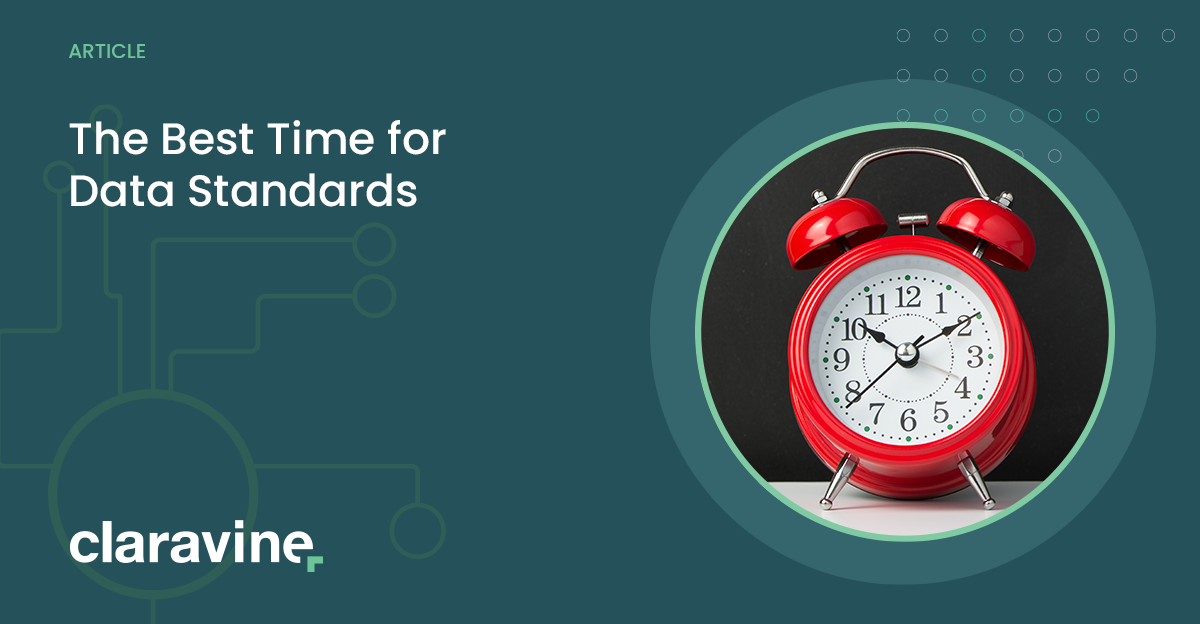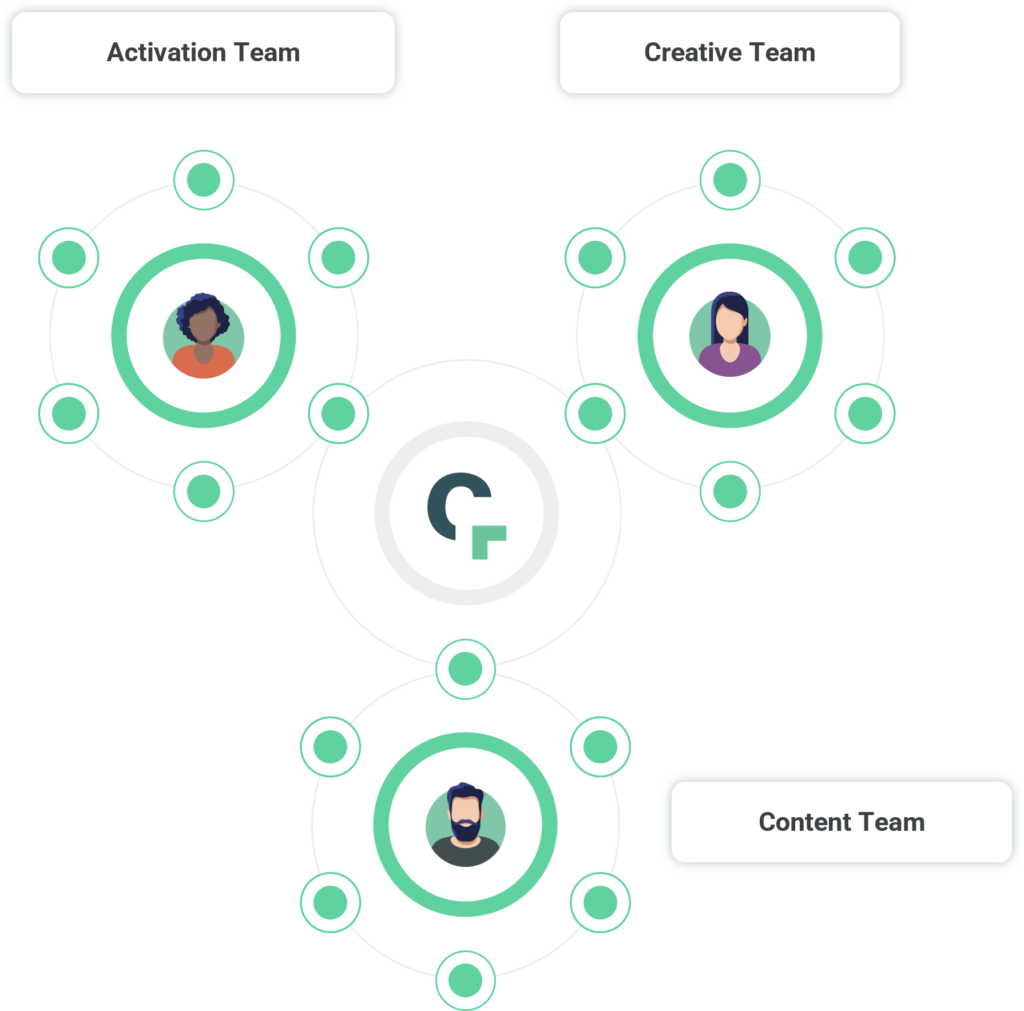When do you need data standards?

“When is the right time for implementing standards?” This is the question we hear the most when talking to organizations who are starting their data integrity journey.
The honest answer is “the sooner the better” but we understand that every organization is balancing competing priorities. So, if you are trying to determine what makes the most sense given your various projects and objectives, read on!
Problems to Watch for
The best time to implement standards is different depending on your specific marketing challenges. Here are some situations that can make standards particularly valuable immediately.
Situation 1: campaign tracking is a mess
- Tracking codes and parameters are inconsistent (or missing altogether)
- Building links – especially at scale – is slow and error-prone
- Parameter detail is visible on the URL which is exposing sensitive campaign info
- Data isn’t consistently captured because of tagging issues
- You’re losing out on valuable metadata about campaigns
- Analytics doesn’t have what they need for insights and measurement
Sound familiar? This is a common challenge most organizations still grapple with. But data standards can help you align and enrich campaign tracking for more accurate, granular measurement and decisions.
Situation 2: a lack of taxonomy wastes content and creative efforts
- Assets aren’t searchable or discoverable
- Missing or inaccurate page data disrupts personalization
- The volume of data we have is impossible to fix manually
- Hand-offs between creative and ops are a mess from inconsistent naming
- Content migration to a new DAM/CMS needs a taxonomy applied
- Can’t measure or figure out how to measure what content works (or doesn’t)
If this is you, you aren’t alone. Content and creative have the potential to be a super power, but you have to get naming and tagging right. When you apply data standards to your digital assets and webpage data, it becomes exponentially more useful for discovery, automation, personalization and analysis.
Situation 3: lack of taxonomy compliance by media teams is a huge business risk
- Naming and tracking is inaccurate and inconsistent
- There is difficulty managing and adhering to requirements across teams and geographies
- Data isn’t consistently captured because of tagging issues
- Analytics & BI struggle to measure campaign creative and overall campaign performance given the data they have (or more specifically, are missing)
Media buying has its own very unique challenges – particularly when it comes to process and team complexity. And when you – or your agencies – get it wrong, it is costly; like millions of $ costly. Data standards help ensure you get naming and tracking right every time, so you see improved hand-offs, and more accurate, confident measurement.
Situation 4: mobile link generation is a mess
- Mobile links are inconsistent, and improperly generated – leading to poor customer experiences
- Building links at scale is slow and error-prone
- There is a struggle to manage the various team members contributing to campaigns across various tools
- Valuable metadata on campaigns is being lost because it’s not applied
- Analytics doesn’t have what they need to measure mobile or compare results to our non-mobile efforts
Mobile marketing has never been easy, and with changes to mobile tracking and reporting, the data you DO have is more valuable than ever. A Data standards platform helps you to seamlessly generate data-rich deep-links (or other types of mobile links) so you get the experience right, and capture more data for measurement and insights.
The Best Times to Make a Change
It’s likely you identify with one or more of these challenges. But when is the right time to approach addressing them through standards? Any time is better than ever, but there are a few triggers you might want to watch for.
Team changes
Sometimes teams can become (too) comfortable with a way of doing things. This doesn’t mean you don’t have teams that are open to – or even eager for – change, but if you switch-up your internal team structure, or onboard a new agency, this can be a good time to also evaluate your approach to standards. What do your teams need to do their best work? And how could a reimagining of the tools they have help?
Tech changes
Did you know that most enterprise organizations see a 30% turnover in SaaS applications every year? While this volume of change can feel frustrating, it can also be an opportunity. Activating in a new channel, implementing a CDP, or migrating a DAM or CMS is a perfect chance to set things up properly from the start and maximize your new investment. You probably have specific goals and KPIs for the implementation of a new solution – how much faster could you achieve them with standards in place right now?
Organizational pivots
The data that “works” today, may not work tomorrow. If your team, business unit or organization has new objectives or strategies for meeting these goals, you may also need a new approach to your data. The best way to approach standards is with an objective in mind, so if you have something new you are trying to figure out, standards are a great place to start. And then, with standards in place, future pivots become easier because your data is already set-up to be more agile, and easier to centrally adjust and distribute.
Industry trends
Finally, sometimes the biggest forcing function for change comes from outside your organization. For example, with an upheaval in the digital space, many brands are rethinking how they segment, target and measure. Strategies that became old hat with cookies and mobile identifiers no longer work and the data you used to ignore may now become the lifeblood of your marketing organization (learn more about this topic). By looking at what data you have, and what it can do or not do for you today, you can identify places where standards can give you the most value for your investment.
And if several (or ALL) of these sound familiar, even more of a reason to get started with standards!
The key: don’t wait for standards
Our biggest tip? Don’t wait until the house is built to put in the wiring. Remember: your teams and systems are only as good as the data they receive, so don’t waste your investments simply because you saved this vital step for “later.”
When done right, standards should work in parallel with your other efforts to supercharge your activities. Moving you from longer, sequential work like this:
To faster processes that improve one another as they happen, like this.
Taking a Phased Approach
Maybe you’ve identified a place – or several – where standards could make a big impact on your business right now. It would be ideal if you can implement an enterprise-wide marketing data model from the start (and if you are ready for this, we can help!), but for many organizations that isn’t always realistic. Instead, take one of the challenges you saw above, and begin there.
With this strategy, you can focus on what works (and doesn’t) with a smaller group, test and refine, and then expand. That way, you understand the type of data standards – and as importantly, process implementation – your teams and tech need, and take those learnings forward.

Step 1: Create a foundation for your data standards approach.
Focus on one use case, and construct your standards. This may involve focusing on a single area of activation (ex. campaign tracking for email) or a single piece of tech (ex. Adobe Experience Manager). Either way, you can set smaller, more specific goals for success as you get a better understanding of all of what standards can do.
With this approach, you can align on your needs for a single use case and develop your specific:
- Taxonomy
- Data design strategy
- Initial template development
- Initial team onboarding and implementation

Step 2: Expand the utility of standards to an adjacent use case
Once you are seeing the benefits of standards for one type of team, it is much easier to make a case across additional groups. And, when you apply standards to a connected use case, you can see even more value in the area you started. As an example, you may have improved tracking for email, but by using standards across more of your activation channels, you can get a more holistic view of what works (and doesn’t).
With this approach, you may move onto steps like:
- Taxonomy refinement
- Data design strategy evolution
- Expanded template development with the addition of more connectors
- Expanded team onboarding and implementation
- More sophisticated use of user governance and permissioning

Step 3: Marketing data standards
Once you’ve seen proven value and successful roll-out across several groups (even if they are closely connected), it becomes easy to make the case for a more enterprise-wide marketing data model – a model that activates data standards across all of your different types of marketing teams and tech. This could include internal teams, content and creative, mobile-specific teams, and your media agencies, and spans tech across your martech and adtech stack.
With this approach, you will likely continue work like:
- Taxonomy expansion and refinement
- A data dictionary
- Sophisticated template development with a broad range of connectors
- Expanded team onboarding and implementation
- Advanced use of user governance and permission, usage of approval feature
That said, you can start anywhere!
The beauty of data standards is that ANY improvement in standards shows a return. And the more prevalent these become across your organization, the better everything works together. It really is a virtuous data cycle! Some customers have the time and resources to start at step 3 and see a big return across their organization. If you are in that situation, we can help you take on this type of project. But if you are only ready to start small, this is still a great step!
The most important thing is that you start! Because the more you build your data “house” the harder it is to go back and fix your data foundation. But when you put it in early, you have a solid place to build from – whatever your marketing needs.
Get started with The Data Standards Cloud by dropping us a line.




